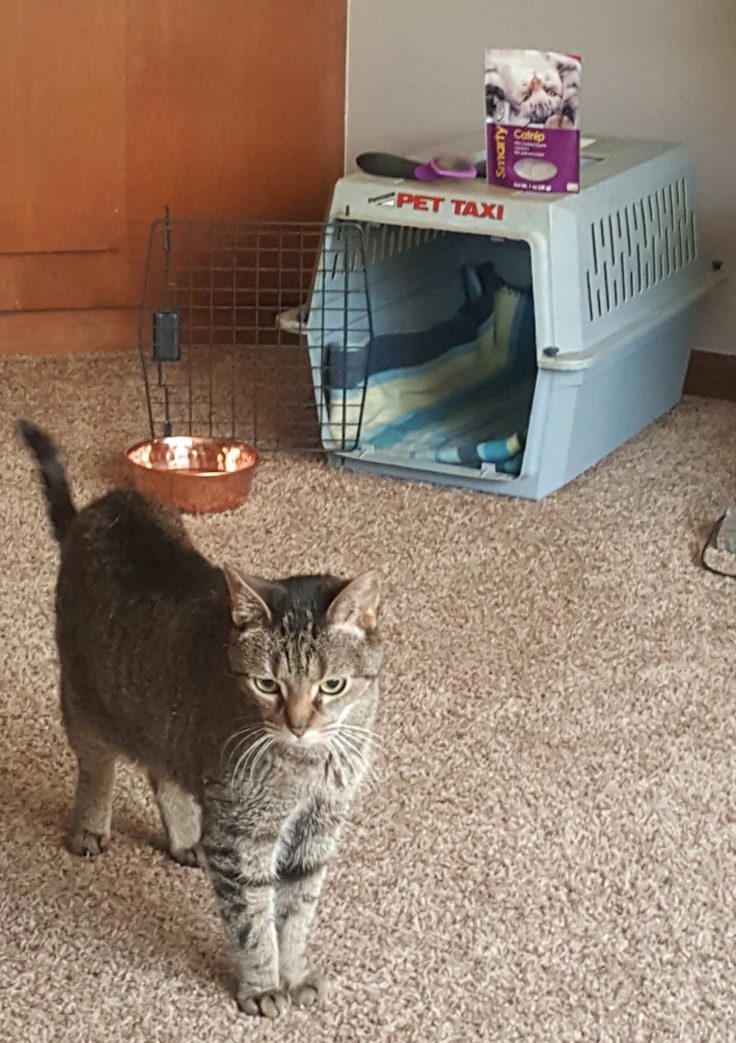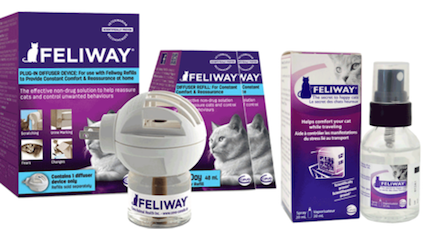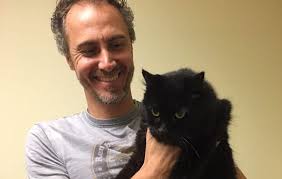A Real Animal
Eric Burdon, Singer-Songwriter
 Singer/Songwriter Eric Burdon (The Animals/War) has an affinity for Elephants and even worked to help save them. Eric also shares his experience living in a zoo.
Singer/Songwriter Eric Burdon (The Animals/War) has an affinity for Elephants and even worked to help save them. Eric also shares his experience living in a zoo.
When you think of Eric Burdon, you think English singer-songwriter and rocker best known as a member and lead singer of the rhythm and blues rock band The Animals and the funk band War. Eric is regarded as one of the British Invasion's most distinct singers with his deep, powerful blues-rock voice and is a big elephant lover!
Before he started singing, Eric recalls an electrifying moment of first seeing Louis Armstrong on television beginning his love for blues music. This led him to take up the trombone, plus it sounded like an elephant.
Eric was also a big fan of Lawrence Brown, who was the main trombone player with the Count Basie band. Eric states he wasn't a good trombone player himself and didn't get very far with the instrument. He was kidding himself thinking that he could play New Orleans style music. Part of the problem is that Eric is asthmatic and it was too much for him to be both a singer and trombone player. He doesn't have any problem just singing with asthma and states it is because, "It's proof of the magic of music!" However, Eric has a trombone player in his band and hired him on the spot because he too is a fan of Lawrence Brown.
Years ago, Eric had a close and personal relationship with a gentle giant at a park in the London Zoo. He tells us he was in shock when he was on tour in America and saw the news in London that a male elephant, jealous of another male elephant, caused the murder of his rival. When he got back to the London Zoo, he asked the elephant keeper whether or not it was true about the affair between two rival male elephants. The story was that an elephant head butted another elephant and pushed it into the canal that keeps the elephants separate from the public. The elephant landed upside down in the canal and unfortunately no one could rescue him. Eventually all of the blood went to his brain and he died. As the elephant keeper was telling Eric this, Eric was convinced that the male elephant that pushed the other elephant was listening to every word and amazingly seemed to understand what was being said. Eric says that he found out just how intelligent these animals are and they have long lasting memories. He doesn't think it was a stretch that maybe the elephant connected with him or what he was saying.
Besides having a close relationship with an elephant in the London Zoo, Eric tells us when he was in Germany, he spent time living in the Berlin Zoo. He had a great time there and learned a lot. However, he hated zoos before that. He felt they were prisons for animals. He knows that these animals have to be kept separate from the general populace, but he found out that the Berlin Zoo was an animal palace and the animals ate better than he did.
 During his time there, the big cats had fresh meat brought in three times a week. Eric was allowed to go in the butcher shop and see the system. He could also walk around the zoo in the middle of the night when there was nobody else there. Eric would be up and awake after working on a movie and he would stay up until five or six o'clock in the morning and watch the animals awaken to face the day and watch the human guests that we're coming to hang around their favorite species. He also watched the lions coming out; who he claims are real family oriented animals.
During his time there, the big cats had fresh meat brought in three times a week. Eric was allowed to go in the butcher shop and see the system. He could also walk around the zoo in the middle of the night when there was nobody else there. Eric would be up and awake after working on a movie and he would stay up until five or six o'clock in the morning and watch the animals awaken to face the day and watch the human guests that we're coming to hang around their favorite species. He also watched the lions coming out; who he claims are real family oriented animals.
Eric says that Berlin was a magical town and it was a magical period because the Berlin Zoo is the heart of the city. Eric was able to live in accommodations that normally houses zoology students when they're studying the animals.
Do zoos in different countries treat their animals differently than they do in Berlin? Eric tells us some stories of the Berlin Zoo. At one time, a friend of his who was the wife of the boss of the zoo took a baby gorilla to breakfast. They went to a restaurant across the street from the zoo. The woman had long blond hair and as they were eating breakfast, the baby gorilla got on the back of her chair and gently combed her hair with her fingers the whole time.
Elephants are Eric's favorite animal and are such gentle giants. He even dreamt years ago that there would be an armed group of soldiers raised in Africa to protect the elephants from the slaughter that's going on from people who are hunting them for ivory. Eric became involved with the Elephant Project and worked on a project to save Burma's timber elephants.
Modern Burmese history was built on teak, which is to say it was built on the backs of elephants. The British quickly saw teak's potential after colonizing Burma in 1824, and realized that hitching an elephant to a two-ton log was the only way of getting timber from where it was felled to the nearest waterway, and floating it to mill and market. Eric says the elephants wrapped their trunks around a log and they wedged it in between their horns and carried it around, probably with a lot more care than a mechanical beast made by John Deere would.
Unfortunately, the quasi-democratic government banned the export of round logs and slashed its total logging quotas. This move spelled disaster for the more than 5,000 elephants and their oosi, or handlers.
 After some 25 years backbreaking toil, some of the elephants had health problems, including cardiac or eye problems. With nowhere else to go, many timber elephants were released into the wild, but because of deforestation there were not enough habitats for them. Competition for land and food brought them into conflict with humans; in India, parallel pressures see up to 300 people killed each year from marauding elephants.
After some 25 years backbreaking toil, some of the elephants had health problems, including cardiac or eye problems. With nowhere else to go, many timber elephants were released into the wild, but because of deforestation there were not enough habitats for them. Competition for land and food brought them into conflict with humans; in India, parallel pressures see up to 300 people killed each year from marauding elephants.
If not set free, elephants risked being slaughtered for their precious ivory or hides. Many were also smuggled across the border to Thailand and put to work in the tourism industry, where animal abuse is rife. Still, others we're used in Burma's illegal timber trade, which in fact accounted for the great majority of the business.
To help these elephants, visit The Elephant Project, a 501(c)3 non-profit, which developes new ideas and new solutions to give a new future to these iconic elephants.
Visit Website
Creating a "Fear Free" World for Your Pets
Steve Dale
 When two competing radio hosts get together, they must have something really important to talk about. Sure enough, Steve Dale and Hal Abrams team up to talk about the Fear Free movement and how it can benefit your pet.
When two competing radio hosts get together, they must have something really important to talk about. Sure enough, Steve Dale and Hal Abrams team up to talk about the Fear Free movement and how it can benefit your pet.
Steve Dale, Certified Animal Behavior Consultant and host of his own pet show, talks about the Fear Free Movement. The Fear Free Movement makes veterinary visits easier for your pets and now there's Fear Free Happy Homes. Steve provides us with tips on ways to make your home Fear Free too.
Before the Fear Free movement had it's name, Steve Dale and the other veterinary behaviorists, including Dr. Sophia Yin and Dr. R.K. Anderson, were practicing this type of veterinary medicine, but it did not have the marketing term Fear Free.
One day at a veterinary conference, the brilliant Dr. Marty Becker came up to Steve and said, "I have an idea!" His idea was the Fear Free Movement and Steve instantly got it. In fact, Steve is not even sure he let all the words fall out of Dr. Becker's mouth before he interrupted and said, "I get it!" because Steve himself had been talking about this sort of thing for a very long time.
What Dr. Becker did, however, was encompass the sorts of things Steve had been talking about, even the architecture of exam rooms in veterinary clinics with the latest research that's out there. This included what colors pets may prefer along with the idea of playing classical music in the clinic.
Steve tells is that the concept of Fear Free really begins in homes. He's so glad that Dr. Becker also began this notion of Fear Free Happy Homes.
One example of a Fear Free Happy home involves the cat. The carrier comes out and where is your cat? He's out of there! Steve says even if they do build that wall to Mexico, the cat's going to climb over it. And by the time, even if you can do it, run all over your house, grab the cat who's screaming and stuff them into the carrier (there are people that can't physically do that), but even if you can get that done, by the time you get them to the veterinary office there isn't much even the best veterinarian on earth can do to calm that cat down at that point. And in fact, Steve believes that many cats and dogs at the veterinary clinic believe they are going to die. That's how bad it is.
Now imagine this, the carrier comes out and the cat just hops in. Or, you drive to the veterinary clinic, you jump out of the car and your dog is actually dragging you into the clinic. Life can really be that way!
 What can you do so that you don't freak out your cat every time you pull the carrier out? Steve says it is easier to train a young kitten, but it doesn't matter how old your cat is you can still desensitize them and counter condition them to the carrier.
What can you do so that you don't freak out your cat every time you pull the carrier out? Steve says it is easier to train a young kitten, but it doesn't matter how old your cat is you can still desensitize them and counter condition them to the carrier.
Steve says it takes some patience, but what you do is take out the carrier and leave it out as if it is a piece of furniture. Your cat will probably take a wide berth walking around it, but eventually they get adjusted to the fact that the carrier is just there like the sofa is just there. Over time, begin to drop some treats randomly into the carrier, so the carrier becomes a treat dispenser. So now your cat will periodically investigate it and wonder if there's going to be something really good inside. Next, feed your cat just outside the carrier and work up to feeding them inside the carrier.
When your cat is comfortable eating inside the carrier, you're actually going to close the zipper with them in it and just walk all the way into the next room. Then let the cat out of the carrier and feed them. This shows them that good things happen after they have been in the carrier.
Fast-forward the clock a little bit. You've given the cat a tour of your house. You've gone upstairs and downstairs, to this room and that room. The cat gets fed. The cat is not complaining. The cat voluntarily goes into the carrier because the cat knows they will get fed afterwards.
After you've got your cat conditioned to walking around the house, next you take your cat down to the car. These steps are also slow. You just start the car but go nowhere. You go back to the house and your cat gets fed after being in the carrier in the car. Eventually you drive down the driveway. Then you drive down the block. Then you drive around the block. Then you go to the veterinary clinic, but nothing happens there except the cat gets a treat or two. You go back home and your cat gets fed. This does take some doing, but it's totally worth it.
If you have a kitten, Steve's secret is finding somewhere in your area where they have kitten socialization classes. Or take it upon yourself, if you happen to have a kitten between the ages of eight and fifteen weeks, as it's really easy. Kittens just don't care. Put them into the carrier and go to the vet clinic. Give your kittens some treats. Do it again and again. The kitten will be absolutely fine with that or enroll them in a kitten socialization class. If you keep this up throughout the kitten's life, as the kittens becomes an adult cat, you've got it made.
We also have some tools available to help our cat during stressful times, which we didn't have five or ten years ago. One is Feliway, which mimics a cat's natural pheromone. When cats rub their cheeks pads against the table leg or against your leg, what they're doing is depositing a pheromone. That pheromone, translated from cat language means, "Ooh, I'm comfortable and happy to be here." Feliway comes in either spray or wipes. You just spray or wipe the Feliway into the carrier about 15 minutes before the cat goes into the carrier for all these dress rehearsals and you've got a less anxious cat.
Steve has owned pets for many years, so how has his personal experience at the hospital changed? Steve says he cheats, because he has been a behavior consultant, which has been a passion of his for a very long time. He believes that cats are under-medicalized in this country. He says there are many reasons behind that and he can define exactly what those reasons are. He states the biggest most considerable reason from a cat caretaker's perspective is simply getting them there in the first place, which is so very difficult to do.
 He goes on to say that the best veterinarian on the planet cannot treat a cat or a dog that's not coming in. You just can't diagnose an animal you're not seeing, no matter how good you are. So getting them there has been of prime importance to Steve for years. Steve has also been teaching kitten socialization classes for a very long time now and practices what he preaches.
He goes on to say that the best veterinarian on the planet cannot treat a cat or a dog that's not coming in. You just can't diagnose an animal you're not seeing, no matter how good you are. So getting them there has been of prime importance to Steve for years. Steve has also been teaching kitten socialization classes for a very long time now and practices what he preaches.
For dogs, if you have a local business in your area that offers cookies to the dogs, when the dogs go by that place they will drag you and take you for a walk to get there. Steve states that this is how his own dogs now feel about going to the veterinary clinic.
So once you have a Fear Free Happy Home, why is it so imperative that pet owners seek out a Fear Free veterinarian? Steve explains that there are so many reasons for that, with the primary reason being that they don't need to feel terrified or like they are going to die.
In Steve's career, he's met perhaps thousands of veterinarians and thousands of veterinary nurses. He's never met one that hasn't gone into the business to help companion animals. But when our pets are terrified, their hearts break and the hearts break of the people that are bringing them in. This leads to a stressed owner and a stressed pet. This vicious cycle doesn't even have to begin. We can do better than that. Doing better than that isn't only on the veterinary profession. It's on all of us as well.
Check out the websites Fear Free Happy Homes and Fear Free Pets.
Listen and Explore the Fear Free Expert Series
What It's Like To Be On Shark Tank
Alan Cook, BrilliantPad
 A dozen Animal Radio listeners were the first to get to try out the BrilliantPad self-cleaning automatic dog potty and the BrilliantPad creator got a shot on the ABC hit show Shark Tank. With a half-million dollars in shark backing, Alan Cook tells us about the surreal experience of introducing BrilliantPad to a prime time TV audience.
A dozen Animal Radio listeners were the first to get to try out the BrilliantPad self-cleaning automatic dog potty and the BrilliantPad creator got a shot on the ABC hit show Shark Tank. With a half-million dollars in shark backing, Alan Cook tells us about the surreal experience of introducing BrilliantPad to a prime time TV audience.
BrilliantPad, created by Alan Cook at Brilliant Pet, is something that is truly unique as there has never been anything like this before. BrilliantPad is the world’s first automatic self-cleaning dog potty for small dogs less than 25 pounds.
Alan tells us his experience on Shark Tank was so much fun as well as being surreal. You see the show on television, you feel like you know the people because you have been watching them for so long, and all of a sudden he was standing in the same room with them. Alan has no problem talking to people and in front of crowds, but yet he doesn’t think he’s ever been in front of five sharks. He’s never been in front of millions of people at the same time either and it was completely crazy.
When asked if he was nervous, Alan replied he thinks he was fine. He says it was one of those things where the adrenaline had kicked in. The most nerve-racking aspect to him is when he had to stand behind the doors. When they open, you walk into the room with the sharks.
Alan was ready behind the doors, when someone tapped him on the shoulder and says for him to hold on they needed to adjust something on the set. He says it was kind of like you're icing the kicker in a football game. All in all there was a total of a five-minute delay.
The other thing that happened, and there are many articles that talk about this, once you walk through the doors you don't start into your pitch right away. You stand on a spot for about a minute. What is happening is that the cameras are going around to get lots of photography that's used elsewhere, that they will need to cut in throughout the episode. So there is this really awkward beginning where you just stand there waiting. And of course the nerves are building, because like you're ready to go and you just have to wait. You get the cue and then it's like you see on TV.
 When you watch the show, you see a couple of minutes of negotiations. However, Alan says he was in the tank for about a total of about 45 minutes. He was told that it's typical to be in there about 45 minutes to an hour. The shortest tapings are as little as 20 minutes, while others have gone on as long as two hours. Yet they all boil down to what you see on TV.
When you watch the show, you see a couple of minutes of negotiations. However, Alan says he was in the tank for about a total of about 45 minutes. He was told that it's typical to be in there about 45 minutes to an hour. The shortest tapings are as little as 20 minutes, while others have gone on as long as two hours. Yet they all boil down to what you see on TV.
The show has been around for many years and the cast and the crew are very professional. Alan is not a professional TV person, nor are any of the other contestants on this show, but they did a really nice job of just trying to make everyone as comfortable as possible.
While in the tank, Kevin O'Leary told Alan that his product had to stink to high heaven, since the roll could last a few weeks just sitting there full of dog waste. Alan allowed Kevin to smell a soiled BrilliantPad roll that was full of dog waste. Alan states that Kevin smoked it like a cigar and said he was really impressed, as he couldn't smell anything. While this part didn't make it to air, Alan said the other sharks then passed the used pad around to smell it for themselves and we're all impressed.
Alan was so excited when this happened, as it really helps for him to explain to people and show people how well brilliant pad contains the odor.
It's no surprise that the first shark to make Alan an offer was none other than Kevin O'Leary. Kevin offered Alan a typical Kevin deal, with all sorts of loan features and paybacks. But then Lori Greiner jumped in and they started negotiating with each other and eventually worked out a deal.
 Lori does a terrific job selling products. She connects with women. So many of the BrilliantPad customers are the same people that Laurie already has a relationship with. Alan was really excited to grow his sales with her help.
Lori does a terrific job selling products. She connects with women. So many of the BrilliantPad customers are the same people that Laurie already has a relationship with. Alan was really excited to grow his sales with her help.
The BrilliantPad, a self-cleaning indoor dog-potty system, is made for dogs up to 25 pounds. However, Alan says the machines are really strong. And even though they say it's for 25 pounds and under, Alan says he actually stand on the machine and jump up and down and it is fine. As it is, there are already some larger dogs that are using the BrilliantPad. Basically if your dog can go on a potty pad that's about 24 inches by 23 or smaller, even if they are heavier than 25 pounds, they'll have no problem using the machine.
Visit Website
It's Not Doggie Asthma - It's a Reverse Sneeze - Dr. Debbie
 What dog owner hasn't heard that frightening sound that dogs make - part cough, part sneeze and often described as a dog being unable to catch his breath. But it really isn't asthma, or some kind of bone stuck in your dog's throat - it's a reverse sneeze. So before you panic and run into the veterinary office on emergency, ensure you know what a reverse sneeze is.
What dog owner hasn't heard that frightening sound that dogs make - part cough, part sneeze and often described as a dog being unable to catch his breath. But it really isn't asthma, or some kind of bone stuck in your dog's throat - it's a reverse sneeze. So before you panic and run into the veterinary office on emergency, ensure you know what a reverse sneeze is.
Meet the Reverse Sneeze
A reverse sneeze is a respiratory sound in a category all its own. Also known as a pharyngeal gag reflex or backwards sneeze, the reverse sneeze is a commonly observed respiratory sound in dogs, and less commonly in cats. While a true sneeze occurs on the exhale, the reverse sneeze occurs as the dog inhales. The result is a reverberating snorting, wheezing, episodic sound that lasts for a few seconds to a minute or two. A reverse sneeze is a completely harmless sound and dogs do not suffer any immediate health threat from these episodes.
How can you tell it's a reverse sneeze?
There is no easy explanation of the sound - you just have to hear it and you'll recognize it. Click to see and hear an example of a dog's reverse sneeze episode.
Part of my enjoyment on the weekly national radio program, Animal Radio, is describing the peculiar smells, sounds and essences of veterinary medicine with our listeners. On many an occasion when speaking to callers, I have re-created the sounds of reverse sneezing. I'm no Rich Little, but I do take pride in my impersonation of a canine reverse sneeze, which is admittedly better in person with the visuals to complement the throaty sound.
Characteristics of a dog displaying a reverse sneeze include:
- Vibrational coughing/wheezing sound
- Stiff, extended neck
- Facial grimace
- No discharge from nose
- Not followed by coughing or vomiting up material
- Not involving collapse episodes
- Animal is completely normal after event
What causes a reverse sneeze?
Some reverse sneeze episodes occur when a dog gets very excited or pulls against a leash. Brachycephalic breeds (short faced breeds) like Pugs and Boston terriers commonly display reverse sneezing due to their upper airway conformation.
 Allergies, respiratory infections, nasal mites, inhaled foreign bodies and masses can also trigger reverse sneezing. Dogs with inflammatory conditions such as lymphoplasmacytic rhinitis can also display bouts of reverse sneezing. And sometimes reverse sneezing occurs in the wee hours of the night, while a dog is sleeping, for no apparent reason. In fact, many veterinarians receive panicked phone calls at 2am from pet owners, concerned of impending asthma attacks or respiratory arrest, only to have it turn out just to be a typical case of reverse sneezing.
Allergies, respiratory infections, nasal mites, inhaled foreign bodies and masses can also trigger reverse sneezing. Dogs with inflammatory conditions such as lymphoplasmacytic rhinitis can also display bouts of reverse sneezing. And sometimes reverse sneezing occurs in the wee hours of the night, while a dog is sleeping, for no apparent reason. In fact, many veterinarians receive panicked phone calls at 2am from pet owners, concerned of impending asthma attacks or respiratory arrest, only to have it turn out just to be a typical case of reverse sneezing.
What to Do?
There is no required treatment for a reverse sneeze episode. However, I recommend stroking a dog's throat while gently speaking to him in a calm manner until the episode subsides. Some advocate closing/pinching the nostrils off, which forces a dog to swallow and curtails the reverse sneeze episode. Whatever the approach, reverse sneezing episodes are over within minutes, so no emergency treatment is indicated. Antihistamines may be prescribed to minimize reverse sneezing episodes.
When to Worry?
If all of a sudden your dog is having repeated bouts of reverse sneezing, evaluation by your veterinarian is indicated. Consult with your veterinarian if your dog is reverse sneezing along with other symptoms such as facial rubbing, nasal bleeding, nasal discharge, coughing, or significant sneezing episodes.
Nasal mites are a common cause of reverse sneezing and may be noted after a recent boarding visit, especially if multiple dogs in a household are involved. Nasal mite treatment is easily pursued with anti-parasite injections of ivermectin (or in collie breeds - the alternative Milbemycin.) If reverse sneezing is excessive and prolonged, the nasal and pharyngeal areas should be evaluated by a veterinarian through rhinoscopy - a procedure performed under anesthesia in which the nasal passages and pharyngeal areas are visualized with an endoscope, a micro camera. This is how foreign objects and masses are typically identified. In other cases, further tests may be needed including a CT scan or with biopsy samples from sinus passages.
Final Thought
The good news is that most of reverse sneezing episodes are harmless, and do not indicate any serious illness. Arm yourself with information by learning what a reverse sneeze looks like and you may save yourself an unwanted emergency veterinary visit over this peculiar but non-life threatening occurrence.
Featured veterinarian known as "Dr. Debbie" on national pet radio program, Animal Radio. Ebook author of "Yorkshire Terriers: How to Be Your Dog's Best Friend"; "Pugs: How to Be Your Dog's Best Friend"; "Mini Schnauzers: How to Be Your Dog's Best Friend"; and "Shih Tzu: How to Be Your Dog's Best Friend." Dr. Debbie's books.
Visit Website
Animal Radio News - Lori Brooks
 Fake Service Dogs on the Rise
Fake Service Dogs on the Rise
Many states have now enacted laws cracking down on people who try to pass off their pets as service animals. The toughest of the anti-fake service dog laws are already in existence in California, where the maximum penalty is a $1,000 fine and up to six months in jail. The American with Disabilities Act requires all places open to the public to give access to service dogs and their owners. It permits them to ask only two questions: 1) whether the dog is required because of a disability and 2) what tasks the dog is trained to perform. It is actually illegal to request documentation for the dog or to ask the nature of the owner’s disability. The crux of the issue is the growing use of “emotional support dogs,” which are intended to provide comfort to those with anxiety or other emotional problems. Some of them may have received special training, although experts say the training is nowhere near as rigorous as the training for service dogs. Because of this, emotional support dogs are not covered under the Americans with Disabilities Act and can legally be denied access. A service animal is trained for years to be in public places. In fact, you should hardly even know they are there. There have actually been documented cases of legitimate service dogs being attacked by untrained emotional support dogs. A real service dog will not even move when that happens. Besides bad behavior, another way to tell the difference between a real and highly trained service dog is, according to trainers, owners of real service dogs don’t carry them in shopping carts or purses. “The rule is four on the floor,” with all four feet on the ground at all times except when a dog is performing a task requested by the handler. More and more Americans are in favor of a national certification program and registry for legitimately trained service dogs.
 "Whole-Family Cemeteries" Include Pets
"Whole-Family Cemeteries" Include Pets
The Green Pet-Burial Society advocates for “whole-family cemeteries,” places where the whole family, pets included, can be buried together. The burial of pet remains in cemeteries designated for humans is illegal in many U.S. states. It’s definitely a touchy subject for humans-only cemeteries, which were created with humans only as a stipulation. However, New York legalized the burial of animal remains in human cemeteries, with the understanding that both humans and pets must be interred at the same time. Still, the Green Pet Burial Society says there are just many stories of people sneaking the cremains of a beloved pet into the casket of somebody who has passed. The group has created a directory of cemeteries all over the country where people can be buried with their pets. One such place is the Eloise Woods Community Natural Burial Park in Cedar Creek, Texas, where they have a section exclusively for animals, which is home to more than a hundred pets of every kind from rats to dogs and cats, rabbits, hamsters, cockatiels and more. However, there is another section of the park where 76 animals are buried in family plots, waiting for their people.
Pet Reptiles Not Treated as Well As Dogs and Cats
The journal Veterinary Record introduced a topic that had a lot a people riled up after a series of articles it published about how humans treat reptiles that are their pets. As reptiles and amphibians are becoming increasingly popular pets, animal experts are calling for renewed attention to the trade to ensure we are not hurting our slithery and scaly friends. And the issue is more complicated than you'd think at first. While lizards and geckos can be easier to look after than Rocky the dog who needs a daily walk and lots of socialization, these animals can still suffer from improper care and nutrition. On top of that, increasing popularity means spikes in illegal trade too, possibly placing endangered exotic species at risk. Experts say that compared to dogs, which achieve natural longevity in the domestic environment, 75-percent of reptiles die during their first year in a home. They stress that we need to make sure reptiles and amphibians get not just appropriate housing, but also socialization options, since some are actually more social than we think.
 Cat Reunited With Family After a Year and a Move Across The Country
Cat Reunited With Family After a Year and a Move Across The Country
A senior cat named Stinker in Southern California was back with his family a year after he disappeared while a film crew was making a movie using the family’s home. The family looked everywhere for Stinker who they found as a kitten abandoned on the side of a freeway. When they visited their local shelter they were told that a car near their home had hit a cat fitting Stinker’s description. They assumed it was Stinker and stopped their search, but it wasn’t him. Fast forward to a year later when the family moved to Connecticut. Thinking they were finally ready to add a new pet to their life, they started looking at the shelters in Connecticut but didn’t find what they were searching for. The father then checked the photos of their old California shelter and found a cat that looked like Stinker. A day later he flew out to see the cat for himself. And, yes, it was Stinker. A very happy ending for a long story that could have been solved easily had Stinker had a microchip.
 Listen to the entire Podcast of this show (#1199)
Listen to the entire Podcast of this show (#1199)





